The Future of Tattooing is Female: Interview with Vancouver-Based Tattoo Artist, Mackenzie Evanjeline
The Future of Tattooing is Female: Interview with Vancouver-Based Tattoo Artist, Mackenzie Evanjeline
Women are more likely to have tattoos than men, according to global statistics. Female artisanship is booming and has only scratched the surface in shaping the future of a more inclusive tattoo community. We sat down with Mackenzie Evanjeline, a fierce Vancouver-based tattoo artist, who shares advice on how to spot sexism in the male-dominated industry, her entrepreneurship journey and how to navigate the tattoo market as a woman, from monthly cycles to respecting your body and trending designs.
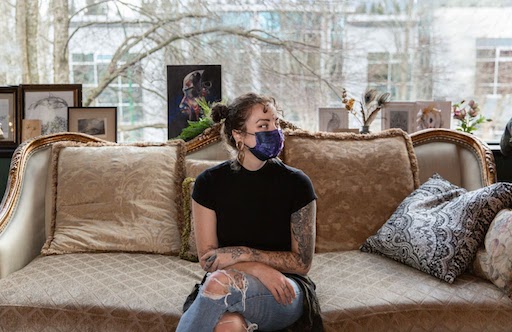
1. When did you know you wanted to become a tattoo artist and how did that lead to getting started?
I always wanted to be an artist but was told growing up that this dream was unrealistic. It clicked in high school that I didn’t have to accept the ‘starving artist’ life and I could do everything I loved for a living while actually making a living. I fell in love with tattoo artistry because it fulfilled my adoration for creative expression and entrepreneurship. I built my business to find ways to give back, expand my creativity and share these passions with others.
At around 16, I started going around to local shops with my portfolio. When I got my first tattoo at 17, my artist finally agreed to teach me after seeing my work. He helped me collect some essential gear before spontaneously moving to Saskatchewan. I was crushed at the time, but now see looking back, that I dodged a bullet. There was an obvious power imbalance (he was at least in his late 30s) with distinct grooming behaviors. This experience is incredibly prevalent within the tattoo community and it's important to recognize red flags. He only booked our sessions after hours, so I arrived as all the staff left for the day, I got discounts for ‘no reason’ and he hit on me during our sessions. Tattooing is a hard industry to gain access to and leaves a lot of young artists vulnerable to predators who will manipulate and abuse them as a way to gatekeep their career dreams.
Afterwards, I decided that I wanted to open my own shop to attract already-skilled artisans. My hope was that providing a workspace would incline someone to let me pay for their mentorship. So along with other jobs, I started selling my art and D.I.Y-printed clothing at markets for additional income to create my start-up fund.
While attending an event in Seattle, the stars finally aligned! I was hanging out in my little gallery space, slightly socially overwhelmed, when a man named Cesar Candelas came up to talk with me. During a conversation about my art, he mentioned being a tattoo artist and offered to teach me if I was serious about it.
Cesar was working out of Mordor Tattoo (now Skye Tattoo), where he still works today, in Arlington, W.A. but decided to head to San Francisco for some time. I wasn’t going to let this opportunity pass by, so I took the money I had, quit my jobs in Vancouver and traveled to San Francisco to begin my education under his wing. Cesar was a trustworthy person from the start, but I wouldn’t recommend going off with a stranger like I did without taking precautions. My parents wanted to make sure he wasn’t going to steal my kidneys or anything, so he agreed to meet them before we left and answer any questions they had regarding my safety.
Cesar had friends and family down the west coast who let me tattoo them (under his watchful eye and guiding hand if needed). I’m eternally grateful for Cesar and everyone who trusted me with their skin and opened their homes to us.
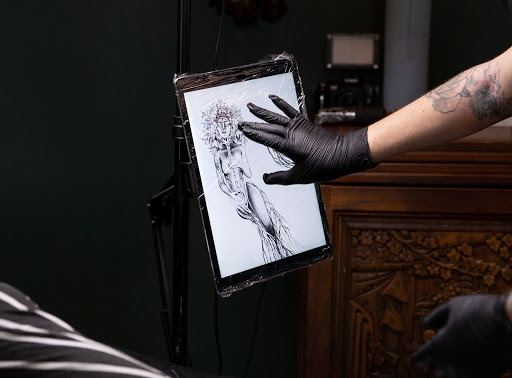
2. Was there anything or any person that helped you get to the "next level" of tattooing or is it something that comes naturally to you?
So many conscious and unconscious factors shape your development as an artist. My mentor and I have very different styles, so my fine line and single needle expertise is mainly self-taught. I took inspiration from other successful artists and experimented with these techniques (usually on myself). This experience taught me how one’s unique tattoo style develops and why every artist has his/her unique strengths, weaknesses and a focused skill set. Keep this anecdote in mind before you ask a colour-packing professional to give you a micro-realism piece.
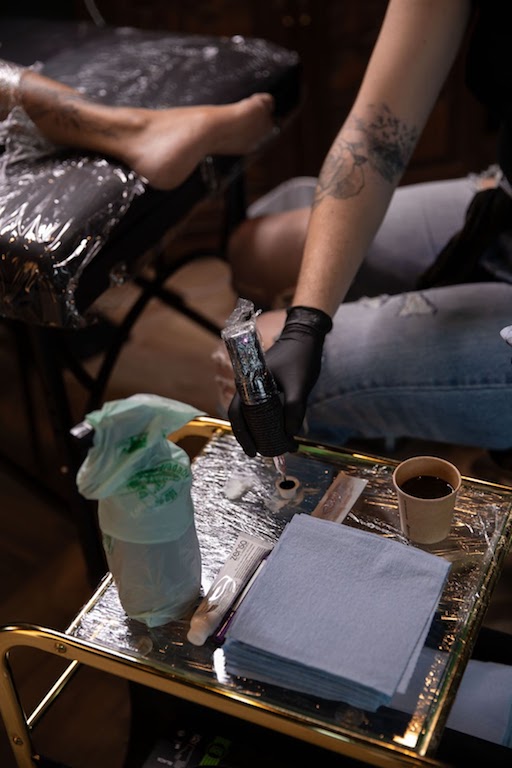
3. How many tattoos do you have and which is your favourite?
I have 15 but am still behind on my wish list! My current favourite is either my Vincent Price portrait or my unfinished recreation of one of James Jean’s beautiful drawings. I finished most of the James Jean piece myself, but it’s meant to continue around to the back of my calf and I just can’t reach any further! The tiny music note my partner gave me, the designs my sister inked when I had just started teaching her and my rib piece in progress by my apprentice, Chloe, also hold special places in my heart.
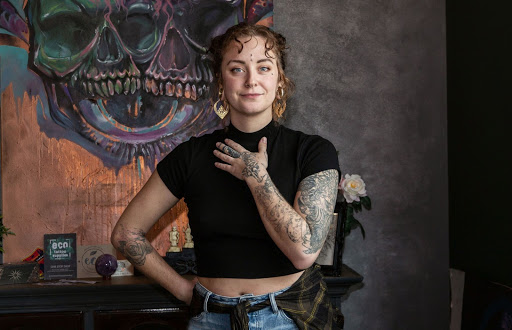
4. What is the most challenging thing about what you do?
When starting out, there was an anxiety around dealing with something as serious as permanent ink and the pressure to exceed every client’s expectations. Over time, my clientele has evolved with me and we established an environment of mutual respect and compatibility. I know that clients now come to me based on my style and approach without trying to change my aesthetic or methodology.
Nowadays, tattooing‘s physical toll is my greatest challenge. I spend 6-8 hours at a time in hard positions and these habits create tendon strain, especially when the majority of the time I’m not tattooing is often spent drawing or designing. Rest time doesn’t really exist unless you enforce scheduled boundaries. It is very easy to overwork yourself and your body, especially when your business is your baby and you love what you do. It easily can take over every aspect of your life and leave other areas of life neglected.
If your art becomes too much about business, the art suffers and so does the artist.
Our work is at it’s best with our most active growth and therefore, the happiest clients, when we set boundaries that provide balance among life, work and art.
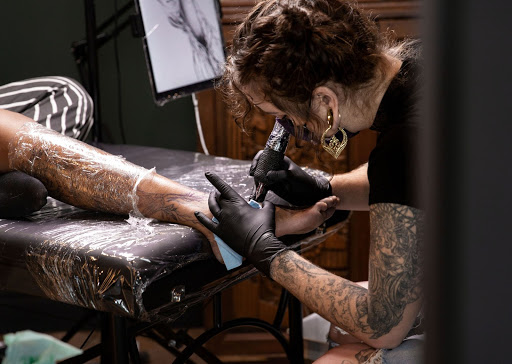
5. Your Instagram handle is “Indigo Evolution.” Can you tell us what that means or represents?
It’s a reference to ‘indigo children’ and the idea that a constant desire to improve is possible through personal accountability, self-actualization and pure intentions. These actions will help us evolve as a species, for each other and the planet, and leave the most destructive parts of our nature behind.
6. What are the most common tattoo pieces/styles and how does your preferred style factor into these trends?
There is a vast range of highly popular styles currently. Whether it’s a neo-traditional, Sailor Jerry sort of style that never seems to lose love, or new-age styles, like watercolour and oil painting recreations or fine lines that are still fresh on the scene. My social media algorithm knows what artists and styles I respond to, and makes my bubble of exposure to trends somewhat limited. My feed is a constant stream of fine line, micro-realism and hyper colourful, surrealist realism pieces. Someone else’s observations could differ.
7. Being a woman in the tattoo industry, has it helped you in some ways, or has it ever been a disadvantage?
While there’s no avoiding certain daily experiences, my tattoo career has not been limited by sexism – aside from the close call with my first potential mentor, of course. I was very fortunate to have Cesar as my mentor and have worked on my own since the end of my apprenticeship.
Being a woman has benefited my career because it allowed me to be a part of a wave of femme artists proving new tattoo styles outside of more traditional design techniques. We created an opportunity for people who loved the idea of being tattooed but felt wrong wearing something heavy on their skin.
I find that many clients, particularly women, are much more comfortable being tattooed by a woman. They aren’t worried about feeling inappropriate, unsafe or exposed. I love having a shop where people of all genders, skin tones, sexual identities and cultural backgrounds, can come and feel safe, respected and comfortable.
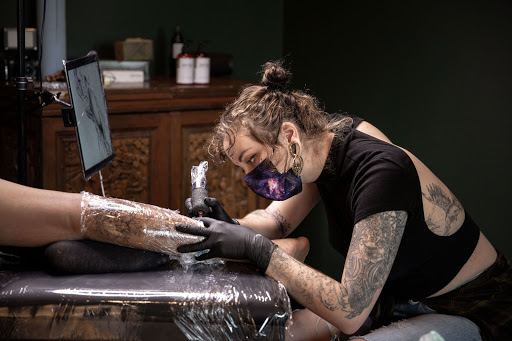
8. Are there any particular trends right now for women and tattoos?
Fine line tattoos seem like the most popular style right now. Generally, I’ve noticed many women love to get the tiniest possible micro tattoos and often request micro realism or just single needle work designs whether that’s script or little flowers, etc.
9. What has been your favourite moment in your career so far?
When I moved into my new tattoo studio. Until recently, I worked out of the same tiny private studio since the end of my apprenticeship. We just finished gutting and fully renovating this new space of my dreams. I’m thankful for my partner, Dennis, who sacrificed so much of his own free time and his skills to make it happen. The whole thing moves slowly and takes so much time outside of regular work hours. You’re exhausted and have to keep going every night and weekend until you’ve made it to the finish line.
10. If a young, or aspiring artist asked you advice about getting into tattooing, what would you tell them they absolutely need in order to become a tattoo artist?
Make sure you want it for the right reasons. Many people just think it would be cool to be a tattoo artist. But, if ego, money and clout are the driving forces, you easily could become one of the many artists who leaves people with negative experiences and tattoos they aren’t happy with. You need to practice understanding the client’s side of the experience. While valuing your work and setting boundaries are important (which requires a healthy bit of ego), you also should be there to share the experience with your clients and leave them happy. Value the people who are trusting you with their skin.
Keep drawing! There’s a difference between being a tattoo technician and artist – fuel the love, practice, explore, have fun. Be patient and practice empathy for the people that you encounter. Take the high road.
Slow down and enjoy the process. Don’t get addicted to progress or comparing yourself to other artists. What is the point if your craft brings you no joy? This mindset will leave you eternally dissatisfied.
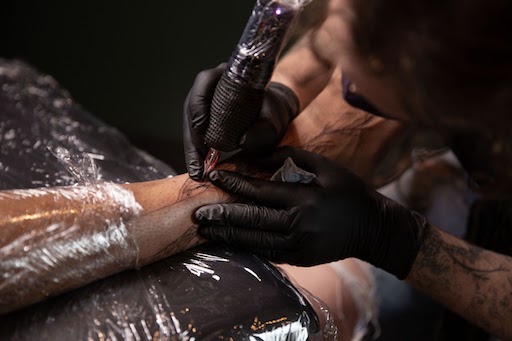
11. Aside from your career, who are you in your personal life? What are your hobbies and passions?
I adore spending time with my friends! I have found myself blessed to be surrounded by a group of people who I love even when I would be otherwise socially tapped out. As an introvert, it’s easy for me to run out of social energy, especially after spending all day chatting with my amazing clients. As much as I enjoy it, it can leave me feeling like a shell of myself and in need of alone time.
I feel like myself when indulging in personal art projects, self care activities, reading, writing, playing with my deck garden, rearranging my home, playing video games, watching cheesy old horror movies or true crime documentaries and podcasts.
Architecture is another hobby that I want to explore. I'd love to design homes with their full lifespan, from construction to possible deconstruction, in mind.
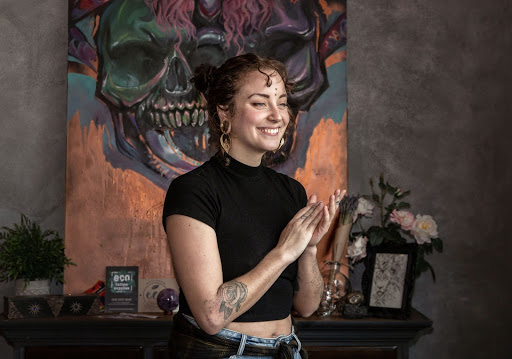
12. How do you ensure a comfortable experience for clients receiving a tattoo in a more painful area?
I provide my clients with a room temperature environment to sit or lie down comfortably in and keep them entertained or distracted. If the client can hold the ideal position for me, it makes it easier to tattoo a hard-to-handle area as quickly as possible. But sometimes it isn't enough!
For women, our cycles are a huge contributing factor to our skin’s sensitivity. I have female clients who can usually sit through 6-8 hours of non-stop sessions for a consecutive couple of days. However, these same clients might barely handle the pain for much smaller tattoos if they come in close to the start of their period.
In these cases, Zensa Numbing Cream (or a similar product) provides a few hours of relief and will be helpful if you realize you scheduled a tattoo for the start of your period (or have a full-day session booked).
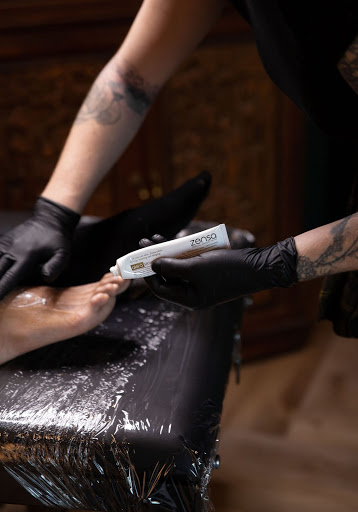
13. What do you recommend someone’s tattoo aftercare routine should look like?
Aftercare recommendations vary widely depending on your artist, shop and tattoo style. My instructions may completely differ from another fine line artist! Find a safe, reliable and educated artist and do what they advise. Avoid consulting the internet and don’t be too shy to speak with your artist. It’s their job to answer your questions! Also, don't fear touch-ups. it's just a part of the process and doesn't mean you or your artist did anything less than a great job.
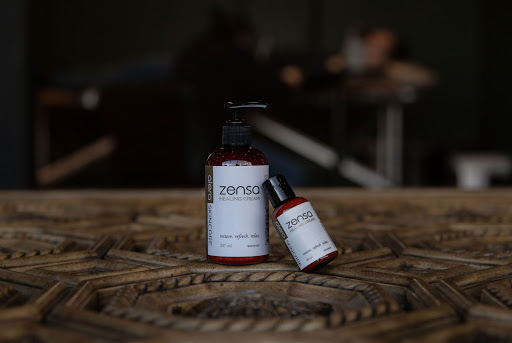
14. Is there anything else you want to tell our readers about yourself?
Just that I have big plans for the future and intentions to give back as much as possible as The Northern Collective grows, and maybe one last piece of advice!
Practice thinking about what the experience of an interaction is like from the client’s perspective. You can build healthy, long-lasting relationships with more than just your tattoo artist.
